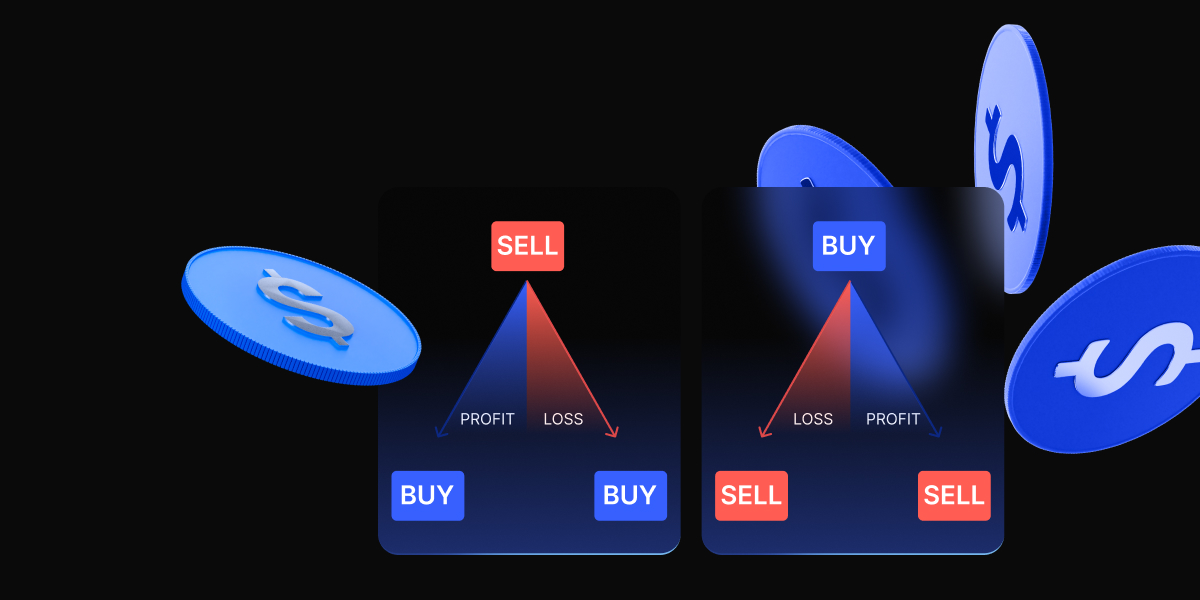Once you have entered the world of crypto, it is only a matter of time before you hear about yield farming and staking. While they offer a way to make passive income, they aren’t the same. The differences mean that not every solution will work for every trader. However, if you are planning to hold onto your crypto for the longer term, these are a couple of ways to maximize your profits.
What Is Yield Farming, and how does it work?
Yield farming is a process in which holders of a cryptocurrency can deposit it into a pool with other holders to achieve investment gains, typically through high interest earned by lending. Yield farming is a risky strategy, but it does have the potential for high rewards.
Decentralized finance platforms offer opportunities to join yield farms with interest rates reaching several hundred APR. These returns come from transaction fees, lending interest, or joining a proof-of-steak liquidity pool. Keep in mind that it is possible to lose your entire investment if the counterparty cannot repay. Because of this, it is imperative that you use yield farming strategies that take risks into account. It also helps if you are on a well-established decentralized exchange like PancakeSwap.
By allowing your holdings in a liquidity pool, you are allowing crypto trading by adding liquidity to an exchange. This will enable swaps and trades to facilitate trading, and you get rewarded via a portion of the fees.
Advantages of Yield Farming
The most apparent advantage of yield farming is that it can offer significant rewards. Yield farming allows you to benefit from a much more significant amount of interest, and you can earn by keeping cash in a traditional savings account. Crypto holders with idle coins can lock their holdings into DeFi protocols to generate additional cryptocurrency. Think of it as a supercharged savings account.
Disadvantages of Yield Farming
Yield farming has its disadvantages. The most significant is the congestion on the Ethereum blockchain, where most yield farming is done. Because of this, the fees for farming trades can be high, so this needs to be considered. Because of this, several Layer 2 systems have been competing for this space, as they utilize sidechains to accelerate transactions and only submit transactions to the mainnet at predefined intervals, called checkpoints.
What Is Staking, and how does it work?
Networks use staking to prevent fraud and errors. Users who stake their coins recommend or vote on new blocks, keeping the network running smoothly. Holders will delegate or lock up their crypto to earn rewards, such as additional tokens. By using your coins, the network can validate transactions, etc.
Advantages of Staking
There are many advantages to staking crypto. The most important thing is that you are helping secure transactions on the network of your choice. You are promoting the network’s health and participating in its growth as it increases security. Sometimes thought of as “liquidity staking,” this keeps the asset liquid and therefore allows opportunities in the DeFi space.
You can earn a portion of the transaction fees on the network, allowing you to benefit from its use. The result is that you make more of that coin, enabling a passive income stream. Staking also reduces the number of coins available on the network, helping to stabilize the market value.
Disadvantages of Staking
There are going to be some disadvantages to staking crypto. One of the biggest is that, in some instances, you will need to lock up your coins for a specified amount of time. This means that you will not be able to access your coins.
You should also understand that crypto is highly volatile. This means that massive price swings may mean that the rewards do not cover the losses. As the market is so volatile, you should only think of staking in a longer-term holding sense. If you are a short-term trader, you should look elsewhere for passive income.
Yield Farming vs. Staking: What’s the Difference?
To understand which form of potential passive income is suitable for you, and the idea of yield farming vs. staking, it is vital to understand the differences between the two. While they both try to achieve the same end goal, passive income, they differ significantly.
Complexity
Yield farming is by far much more complex than staking. Staking allows a pool to borrow your crypto to do transactions on the blockchain. The larger the ecosystem, the safer this typically is. However, with yield farming, there are a lot of potential minefields you could be running into.
Keep in mind that the process of yield farming is to take advantage of the higher returns, but like with anything in finance, you will see the riskier assets pay the most. The ecosystems you use can vary significantly in their complexity and security.
Risk Levels
The risk levels between the two can vary, depending on where you are holding the coins. However, generally, yield farming is much riskier than staking. In yield farming, the potential profits are much higher than staking, but they also come with more significant risks.
Yield farming in some pools will see massive returns, but this is often because they are new liquidity providers and unproven projects. They offer considerable returns to attract more holders into the ecosystem. Many times, these systems are unproven and can be vulnerable to hacks. Also, you can have a situation where you are loaning out one crypto for another in a “swap,” but some of the underlying value of the coin may disappear, or it may go to zero.
Staking crypto is something that most people wish to “set and forget,” so most people are familiar with simple staking protocols instead of jumping from one lender to another, such as yield farming. Yield farming crypto certainly has much more risk, but it also means that you will more likely than not have more work to do to find what you are looking for. While yield farming and staking are similar in their end goals, they have much different risk profiles.
Yield Farming vs. Staking: Comparison
To better understand yield farming vs. staking, it is worth looking at the two from a high-level perspective. Remember that the interest earned on yield farming and staking changes quite a bit due to supply and demand, so this table is simply an overall outlook for the two investments.
| Feature | Yield Farming | Staking |
| Profit | Range of APY | More stable APY |
| Rewards | Variable APY of coin | APY of the same coin |
| Security | Deposit coins on a DeFi platform | Strong depending on the validator |
Staking vs. Yield Farming: Which Is the Better Long-Term Investment?
Regarding longer-term investments, there are some significant differences between these two methods. Both can offer passive income, but the returns will be more significant in yield farming than staking. However, it is also much more dangerous. Therefore, staking makes more sense because it is so much more stable.
One thing to think about is that when you are yield farming, you will more likely than not be jumping from one new project to another, offering liquidity to pools in small markets, etc. Also, the lack of history can mean that you are involved in an ecosystem that hasn’t been tested and had its security put through its paces.
Keep in mind that yield farming and staking require a certain amount of time to be worthwhile, so this is not something shorter-term traders will tend to take advantage of. Time is one of your biggest allies when receiving interest in any investment, and yield farming and staking are no different.
Conclusion
Understand that yield farming and staking aren’t necessarily for everyone. For example, if you are a short-term trader, you won’t be looking for passive income as you are not holding onto a coin long enough to take advantage of these opportunities.
Yield farming can be a way to go if you are looking for fast returns. However, security and trustworthiness are concerns as there have been problems. The act of staking is a great way to participate in the ecosystem of your choice as well, as the coins you are locking up are used to verify transactions.
There are several ways to earn passive income if you are looking for way to earn passive income. The staking option is safer because it often means working with a larger and more established pool or network.
Is Staking Better Than Yield Farming?
Ultimately, it comes down to your investment goals. Yield farming can produce more income, but at the end of the day, it also involves much more legwork. You need to find the best liquidity pool and be willing to move your coins from one collection to another. On the other hand, staking is more of a “set it and forget it” type of situation in most circumstances.
Is yield farming considered staking?
No, because staking involves securing a network, while yield farming allows others to borrow your crypto. The returns are typically much better for yield farming but are much riskier. Yield farming and staking both seek to earn interest, but they are different investments at the end of the day.
Is staking crypto the same as yield farming?
No, staking crypto is about using crypto to validate on a network and earning rewards as new blocks are printed. Yield farming is about loaning crypto out. Furthermore, staking will be safer under most circumstances, while yield farming is done on smaller platforms or with smaller coins. While yield farming and staking are looking to earn interest, staking is done more or less to stabilize the platform, while yield farming is more about lending.
Is yield farming still profitable?
Yes, but it is hazardous in certain circumstances. Quite frankly, it is easier to do during a bullish market. After all, you need to be able to see many transactions to earn many fees. In a bearish crypto environment, it’s a bit much to ask for a lot of trading or transactions in most of these protocols, as they are typically smaller. Cryptocurrency farming can lead to significant gains, but a lack of demand has brought down some of the astronomical rewards that were once available during the bubble. Because of this, DeFi staking may have taken a bit of a backseat in the short term.
The content provided here is for informational purposes only. It is not intended as personal investment advice and does not constitute a solicitation or invitation to engage in any financial transactions, investments, or related activities. Past performance is not a reliable indicator of future results.
The financial products offered by the Company are complex and come with a high risk of losing money rapidly due to leverage. These products may not be suitable for all investors. Before engaging, you should consider whether you understand how these leveraged products work and whether you can afford the high risk of losing your money.
The Company does not accept clients from the Restricted Jurisdictions as indicated in our website/ T&C. Some services or products may not be available in your jurisdiction.
The applicable legal entity and its respective products and services depend on the client’s country of residence and the entity with which the client has established a contractual relationship during registration.




